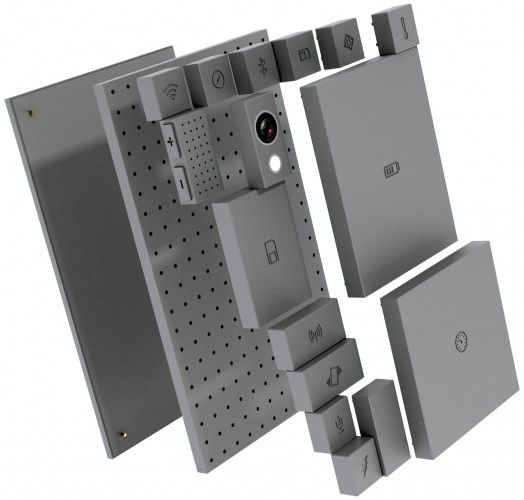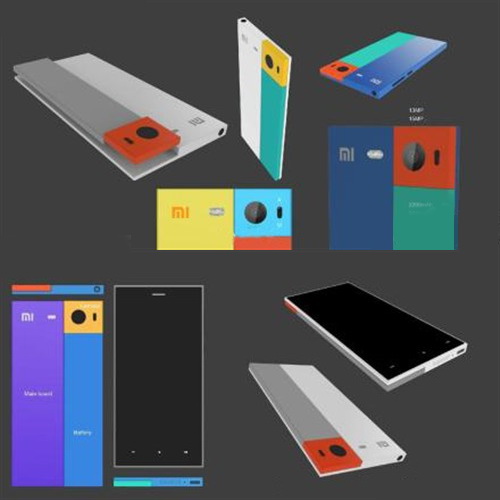
At the CES2014, ZTE exhibited a modular mobile phone called 'Eco-Mobius', the so-called modularity is to allow users to replace some parts in the mobile phone, because ZTE's mobile phone is still a pure concept machine, is only displayed in the cabinet model, so he just imagined: can replace the camera, battery, display, processor, memory and other aspects.

If you still have some impressions, you should remember that there was news in the first half of 13, mentioning Moto's 'Project Ara' plan, and the recent news that the prototype of this phone is close to completion, and it is expected to ship next year (that is, 2015), and it will only cost $50.

The biggest feature of this modular mobile phone is to split the modules in various mobile phones and let users choose by themselves. In fact, this idea is not new, computer DIY is such an idea, because different users according to their own needs, will produce different use scenarios, so the configuration required is not the same, similar to when we have a computer, in order to make the game can have a better and smoother display effect, users will choose a more high-end graphics card, and now users also have such a choice, users who like games do not have to spend a lot of money for that high-speed chip to buy that high-quality camera. Especially in this age with so many mobile game enthusiasts.
However, for this modular mobile phone, it is still very difficult to make most of the main components modular, mainly in the following aspects:
- 'Communication interface problem', just as each manufacturer in the industrial control industry has its own communication protocols and methods for many years, modular mobile phones that have not yet led will definitely experience a long period of interface inconsistency problems, and the most direct harm to consumers is that the modules produced by various manufacturers cannot be universal.
However, even for the original manufacturer, even if their module follows the same protocol specifications, to ensure that a variety of different grades of components can be freely combined by the user and used normally without compatibility problems, it is also a problem for manufacturers, just as at the beginning of the 21st century, the purchase of memory modules often have to worry about whether they can be compatible, it takes years of running-in and the joint efforts of manufacturers to solve.
- 'Communication speed problem', if you want high-speed communication between modules, the cost must be very high, especially the way to allow random combination, of course, for this problem, I think you can learn from the common practice of controllers in the field of industrial control, the core processing components are integrated together, and only the IO interface and communication interface can be expanded.

Lei Jun, who found Xiaomi mobile phones in the online search, also mentioned their YY modular mobile phone in Weibo, and it can be seen from the picture that modularity is relatively simple, divided into four parts: 'screen', 'battery', 'core', 'camera', indeed this can better control the quality of the whole machine, no matter how the user wants to match the parts, the basic shape of the mobile phone will not change.
- 'Appearance', too flexible modules, will have extremely high requirements for the module, or the corners of each module are the same, which will make the mobile phone lose personalization, if the module corners are inconsistent, it will lead to difficult assembly and combination.
However, 'Project Ara' proposed that modules can be made using 3D printing, and if in the future, with the popularity of 3D printing, packaging a bunch of modules with printed personalized shells should indeed be a good direction.
Mobile phones are not the direction I care about, so stop here, let's see if this modular idea can be applied to industrial control or home control.
For 'industrial control', because of its high cost and not so concerned about appearance, it has been possible to achieve modular expansion for many years, and it seems that there is indeed no inspiration.
For 'home control', the two main factions now, one group uses traditional industrial control hardware and software to build a control center, is the same as the above, has long been modular, but because of its high cost and complex operation, it is often reprimanded by the other faction.
This other group uses new technology, using the Internet model to build, emphasizing user experience and simplifying operations, because it attaches importance to simplicity and ease of use, so most of them are trying to do large and comprehensive products in their vertical fields (commonly known as platform-level products), almost completely do not provide expansion or partial upgrade solutions.
I have paid attention to a smart device before, he can connect to your mobile phone through wireless Wifi, it itself can record infrared signals, so that you can remotely make it emit preset infrared signals through your mobile phone to achieve the ability to control household appliances, itself is quite good, but the problem is that this device does not support the expansion of 'IO' or 'communication' ports, for most infrared appliances commonly use the same signal to do the function of opening and closing, in you do not know the status of the device at all, It is very easy to misoperate, send a shutdown command, but due to the accidental loss of signal without a feedback mechanism, it cannot be shut down normally, which is indeed unable to make ordinary users completely assured of such smart devices.
Since existing home appliances usually do not have ready-made interfaces for smart devices, the most critical thing now is to let such devices have more sensor modules to enhance feedback, and these sensor modules are what we most want and need to access in a modular way now.